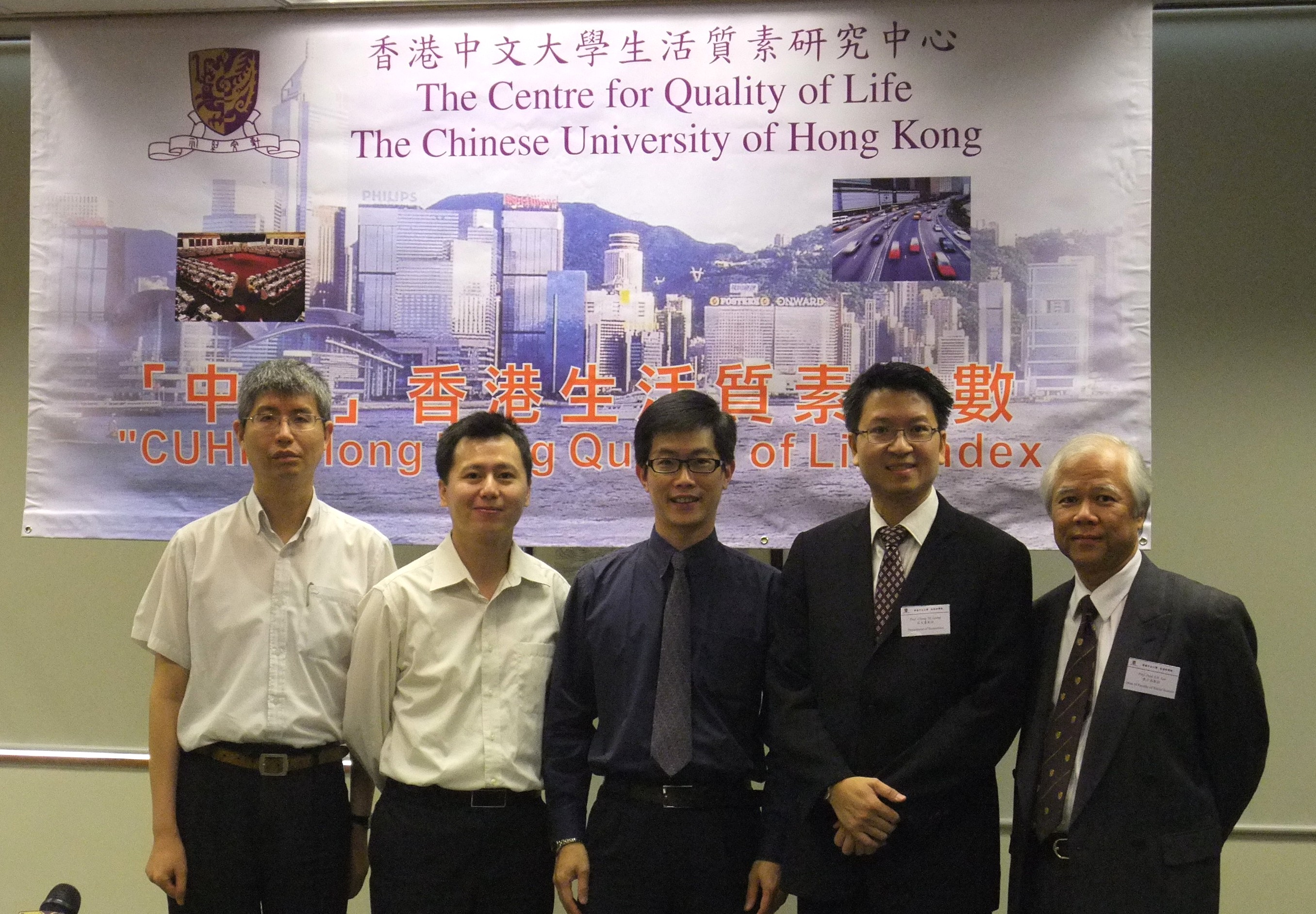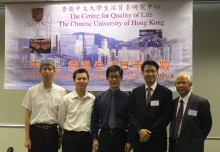CUHK
News Centre
CUHK Hong Kong Quality of Life Index: Quality of Life in Hong Kong Stabilized
The CUHK Hong Kong Quality of Life Index, compiled by the Centre for Quality of Life of The Chinese University of Hong Kong (CUHK), shows that the quality of life in Hong Kong slightly improved in 2010.
According to the latest CUHK Hong Kong Quality of Life Index, the overall score in 2010 was 104.18, went up by 2.66 points from 2009 (101.52), and was lower than those between 2003 and 2008, indicating that the quality of life in Hong Kong recovered to its 2008 level, while there was an overall downward trend in the last three years (Appendix 1).
The Index consists of 21 indicators that are grouped into three sub-indices, viz. social, economic and environmental (Appendix 2). The indicators are selected according to the coverage, measurability, representativeness, and importance to the quality of life in Hong Kong. The higher the score, the better the performance of the indicator.
Compared with the 2009 scores, the socialand environmental sub-indices slightly improved in 2010, while the economic-sub-index sank to its record low since 2002 (the base year) (Appendix 3.1). Though the overall score of the CUHK Hong Kong Quality of Life Index increased in 2010, the economic conditions of the people in Hong Kong deteriorated significantly.
Compared with the previous year, 8 out of the 21 indicators worsened in 2010 (Appendix 4), with the most notable being the housing affordability ratio (from 1.18 to -0.87), meaning that housing became significantly less affordable in 2010.
Compared with the 2009 figures, 10 out of the 21 indicators improved in 2010 (Appendix 5), with the most notable being the notification rate of notifiable infectious diseases (meaning that there were less number of notified infectious diseases in 2010). The marked rise was due to the sharp drop of the number of Swine Influenza cases in 2010. In addition, Swire Influenza has been removed from the list of statutory notifiable infectious diseases since October 2010. Three indicators under the environmental sub-index went up, indicating that water quality, noise pollution and the recycle rate of solid waste had improved. Besides, standardized mortality rate, general life satisfaction index and the age participation rate for first-degree programmes and postgraduate programmes in local universities remained unchanged (Appendix 1).
The CUHK Hong Kong Quality of Life Index was designed by the Faculty of Social Science in 2003. This composite index is intended to measure and keep track of the quality of life in Hong Kong in the 21st century, and to provide policy makers and the community with a useful reference tool. It also aims at enhancing the quality of life in Hong Kong by drawing the public's attention to this issue. For this reason, the Centre for Quality of Life has been set up to conduct on-going quality of life research. Starting from the year of 2003, the Index has been released annually.
2002 was the base year of the study, and the CUHK Hong Kong Quality of Life Index for that year was set at 100. If the Index of a subsequent year is above 100, it means that the quality of life in Hong Kong in that year is better than that of 2002. If the index is below 100, it reveals that the quality of life in Hong Kong in that year is worse than that of 2002. If the Index is 100, it indicates that the Hong Kong quality of life in that year is the same as that of 2002.
For more information on the CUHK Hong Kong Quality of Life Index, please visit The Centre for Quality of Life website: www2.cuhk.edu.hk/ssc/qol.
(From left) Prof. Ma Ngok, Associate Professor, Department of Government and Public Administration, CUHK; Prof. Ng Kai Hon, Assistant Professor, Department of Government and Public Administration; Prof. Ng Sai Leung, Director, Centre for Quality of Life and Associate Professor, Department of Geography and Resource Management; Prof. Chong Tai Leung, Associate Professor, Department of Economics; Prof. Paul Lee, Dean of Social Science and Professor, School of Journalism and Communication



